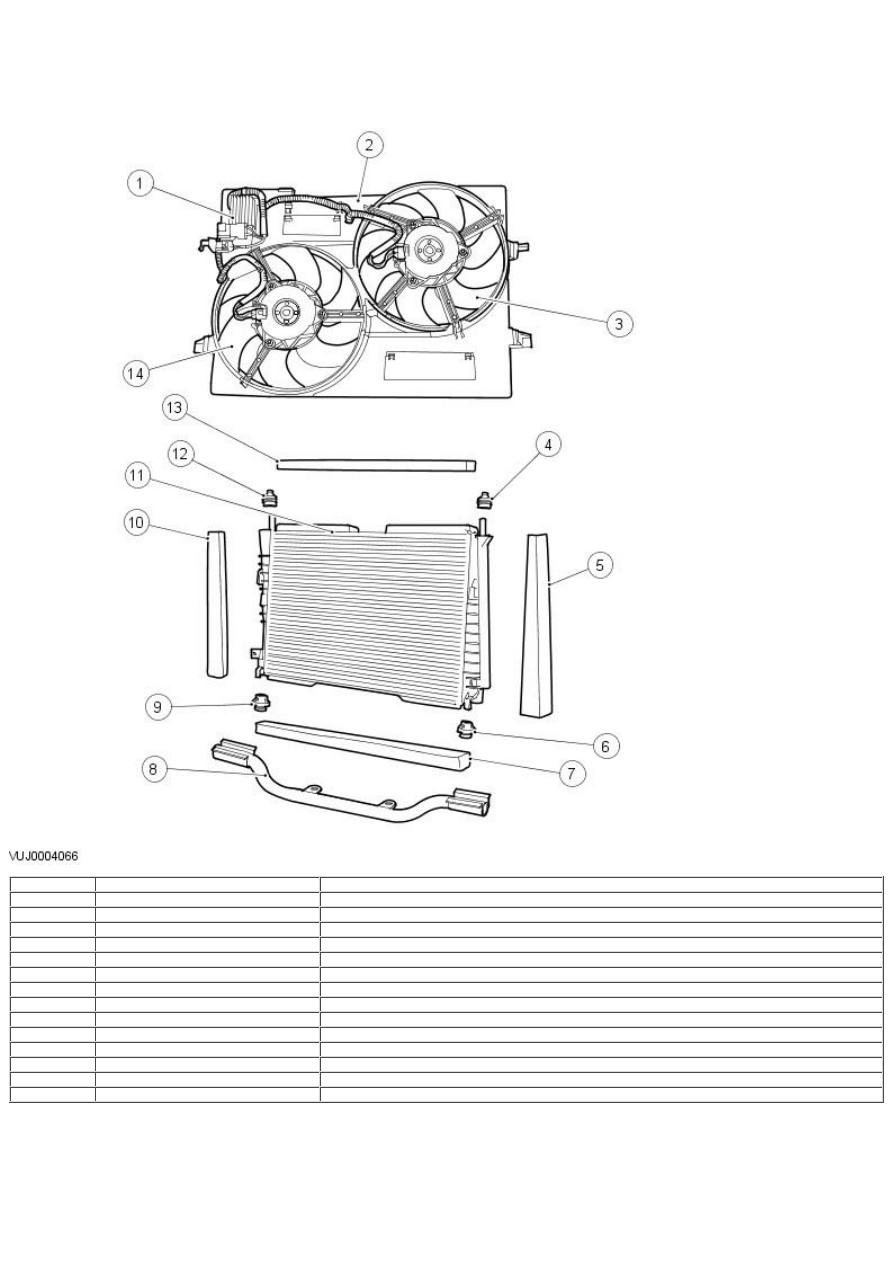Jaguar X-Type Sedan and Estate (Wagon). Manual - part 243

Published: 11-May-2011
Engine Cooling - 2.0L NA V6 - AJV6/2.5L NA V6 - AJV6/3.0L NA V6 - AJ27 - Engine
Cooling
Description and Operation
Cooling Module Components
Item
Part Number
Description
1
—
Cooling fan motor control module
2
—
Cooling fan shroud
3
—
Cooling fan, R/H
4
—
Radiator upper isolator mounting
5
—
Radiator side seal
6
—
Radiator lower isolator mounting
7
—
Radiator lower seal
8
—
Radiator support beam
9
—
Radiator lower isolator mounting
10
—
Radiator side seal
11
—
Radiator
12
—
Radiator upper isolator mounting
13
—
Radiator upper seal
14
—
Cooling fan, L/H
Engine Cooling System Components